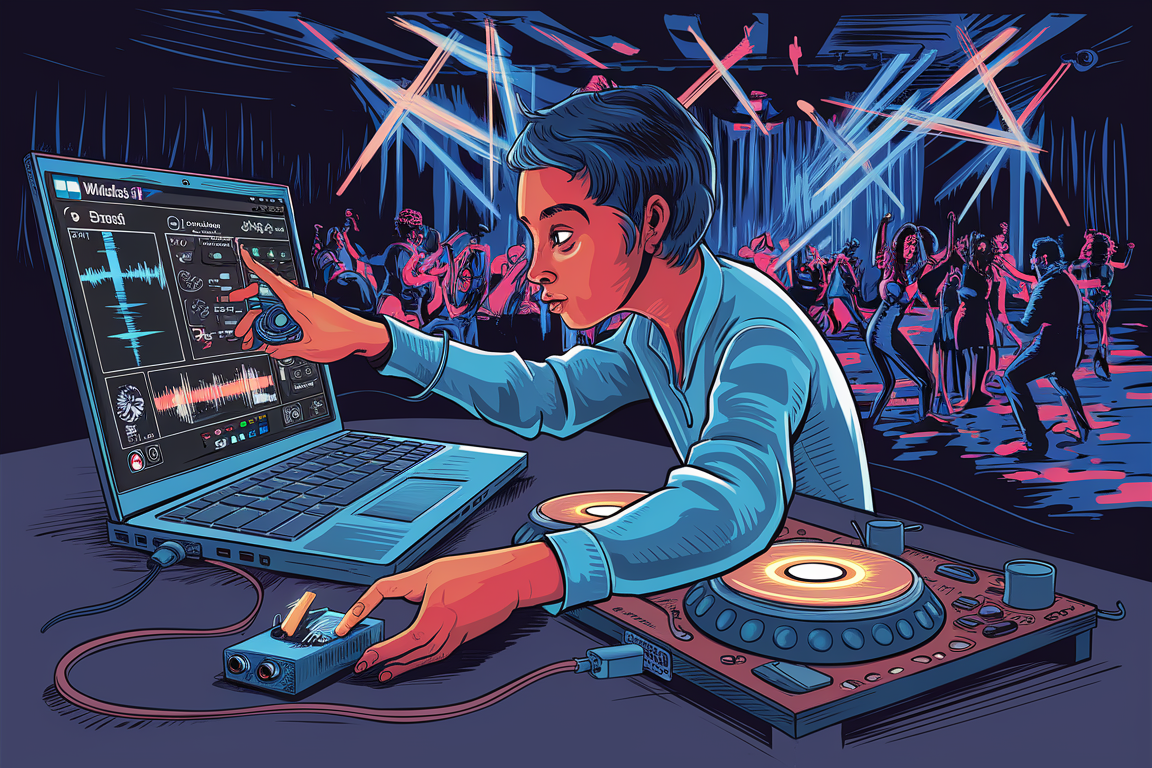Windows 11 has brought many improvements in performance, security, and usability. However, many DJs and music producers have encountered issues where their audio output sounds robotic, distorted, or glitchy when using DJ software with a USB audio interface. This can be a significant problem for live performances, recording sessions, and general music production.
This article explores the reasons behind this problem, potential fixes, and best practices for avoiding USB audio issues in Windows 11.
Understanding the Issue
The robotic sound issue in DJ software on Windows 11 typically arises due to:
- USB Audio Driver Incompatibility—Windows 11 may not fully support certain legacy or third-party audio drivers.
- Latency and Buffer Size Problems—Inappropriate buffer sizes can lead to distortion and robotic audio.
- Windows Power Management Interference—Power-saving features can throttle USB ports, leading to audio glitches.
- Background Processes Hogging CPU/RAM—Windows processes and unnecessary applications can interfere with real-time audio processing.
- Sample Rate Mismatch—Incorrect sample rate settings can cause artifacts in the audio output.
Common Scenarios Where the Problem Occurs
1. During Live DJ Sets
Many DJs have reported that their USB audio interface randomly produces robotic sounds mid-set. This issue is particularly concerning as it disrupts performances and causes frustration.
2. While Using External USB Sound Cards
When using an external USB sound card, users often experience crackling, stuttering, or robotic distortions. This typically happens due to an unstable USB connection or improper driver compatibility.
3. When Streaming or Recording
Streaming software like OBS or recording in software like Ableton or FL Studio may also be affected by USB-related audio glitches, causing robotic or slowed-down voices.
Step-by-Step Solutions
Solution 1: Update Audio Drivers
Ensuring that your USB audio interface has the latest drivers is crucial.
Steps:
- Open Device Manager (press
Win + Xand select Device Manager). - Locate sound, video, and game controllers.
- Right-click on your USB audio interface and select Update driver.
- Choose Search automatically for updated driver software.
- Restart your PC after updating.
If Windows fails to find a new driver, visit the manufacturer’s website and download the latest driver manually.
Solution 2: Adjust Buffer Size & Latency Settings
High latency can lead to audio dropouts, while low latency can result in robotic sounds.
Steps:
- Open your DJ software (e.g., Serato, Traktor, Virtual DJ, Rekordbox).
- Navigate to Audio Settings.
- Increase the buffer size (Try 512 or 1024 samples).
- Reduce CPU load by closing unnecessary applications.
- Test different buffer sizes until the issue is resolved.
Solution 3: Disable Exclusive Mode & Change Sample Rate
Exclusive mode allows applications to take control of an audio device, which may cause conflicts.
Steps:
- Right-click the Speaker icon in the taskbar and select Sounds.
- Go to the Playback tab.
- Select your USB audio device and click Properties.
- Under the Advanced tab, uncheck Allow applications to take exclusive control of this device.
- Change the sample rate to match your DJ software (e.g., 44100 Hz or 48000 Hz).
- Click Apply and OK.
Solution 4: Disable USB Power Management
Windows 11’s power-saving features can cause USB ports to enter a low-power state, leading to audio glitches.
Steps:
- Open Device Manager.
- Expand Universal Serial Bus controllers.
- Right-click each USB Root Hub and select Properties.
- Navigate to the Power Management tab.
- Uncheck Allow the computer to turn off this device to save power.
- Restart your PC.
Solution 5: Use a Powered USB Hub
Some USB ports may not provide sufficient power to an external audio interface, leading to audio distortion.
- Use a powered USB hub to ensure stable power delivery.
- Avoid connecting too many devices to the same USB port as it may cause bandwidth limitations.
Solution 6: Optimize Windows 11 for Audio Performance
Disabling unnecessary background processes can improve audio performance.
Steps:
- Press
Ctrl + Shift + Escto open Task Manager. - Click the Startup tab and disable unnecessary programs.
- Open Settings > System > Power & battery, and set the power mode to Best Performance.
- Disable background apps via Settings > Apps > Installed apps.
- Turn off notifications that might interfere with audio processing.
Solution 7: Roll Back Windows Updates or Reinstall Drivers
Certain Windows updates may introduce compatibility issues.
Steps:
- Open Settings > Windows Update > Update history.
- Click Uninstall updates and remove any recent updates if the issue started after an update.
- If needed, reinstall the USB audio interface driver.
Additional Tips to Prevent Future Issues
- Regularly update your DJ software to ensure compatibility with Windows 11.
- Use ASIO drivers instead of generic Windows drivers for better performance.
- Test different USB ports, preferably USB 3.0 for higher stability.
- Turn off Bluetooth and Wi-Fi if you suspect interference.
- Monitor CPU usage and close any unnecessary applications.
Conclusion
The issue of Windows 11 producing robotic sounds in DJ software via USB audio interfaces can be frustrating, but it is manageable. By updating drivers, optimizing latency settings, and disabling power-saving features, DJs and music producers can ensure a smooth and reliable audio experience. If the problem persists, experimenting with different configurations and hardware setups can help pinpoint the exact cause. Hopefully, Microsoft and audio hardware manufacturers will continue improving compatibility and performance in future updates.
By following these troubleshooting steps, you can minimize disruptions and enjoy seamless DJing or music production on Windows 11.

